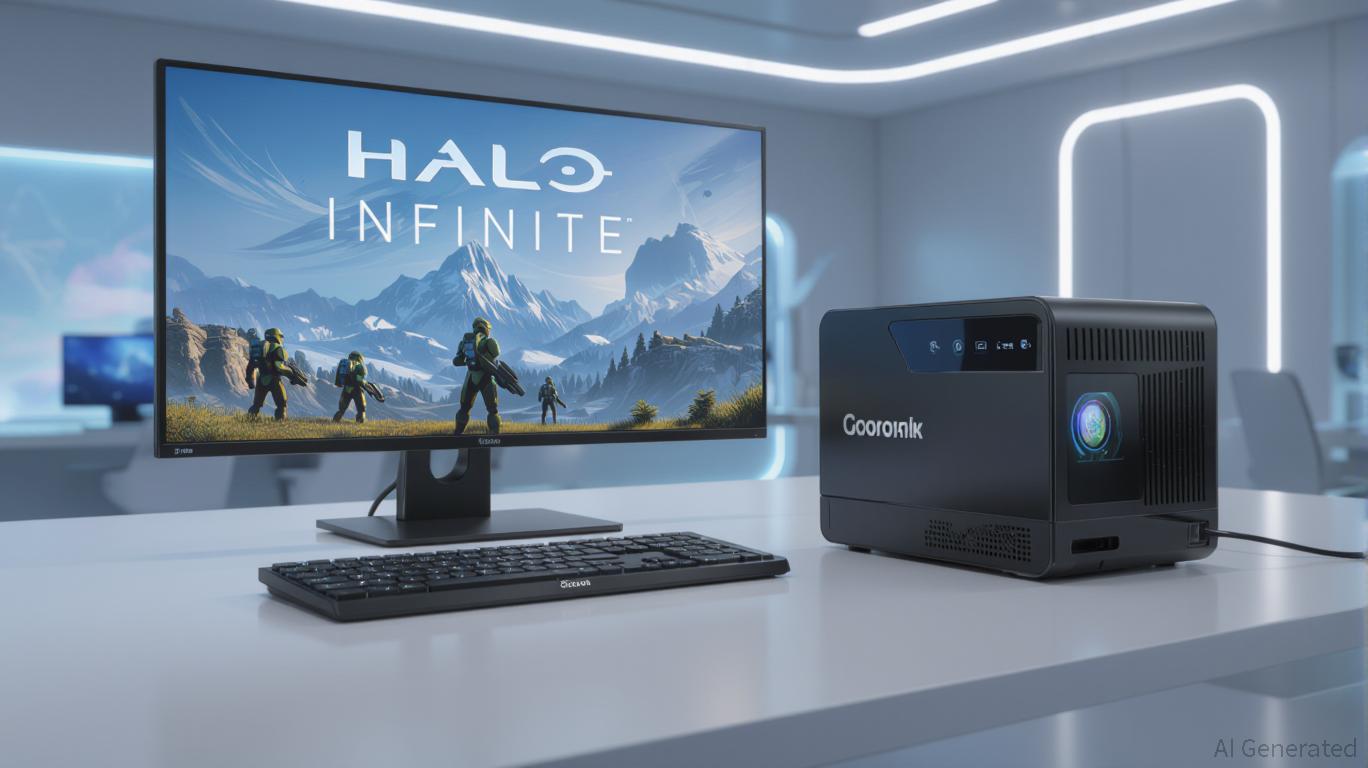
Microsoft’s recent foray into gaming on Arm-based Windows 11 PCs represents a seismic shift in the computing landscape. By leveraging cutting-edge emulation, anti-cheat partnerships, and hardware-software synergy, the tech giant is not only redefining the capabilities of Arm architecture but also positioning itself as a pivotal player in the future of portable, energy-efficient gaming devices. For investors, this strategic expansion signals a transformative opportunity in the high-performance computing (HPC) sector, where Arm’s efficiency and scalability are poised to challenge traditional x86 dominance.
The Technical Breakthroughs Driving Arm’s Viability
Microsoft’s 2025 updates to the Xbox PC app and Windows 11 24H2 have unlocked unprecedented gaming capabilities on Arm-based devices. The ability to download and run locally installed games—previously restricted to cloud streaming—has been enabled by Prism, a next-generation emulation engine. Unlike older x86-to-Arm64 translation tools, Prism reduces performance overhead by 30–40%, allowing titles like Rainbow Six Siege and Halo Infinite to run at playable frame rates. This is further amplified by Automatic Super Resolution (Auto SR), an AI-driven upscaling feature that maintains visual fidelity while reducing GPU load—a critical advantage for Arm’s power-constrained hardware.
Collaborations with anti-cheat providers like BattlEye and Denuvo have also been instrumental. By porting kernel-mode drivers to Arm64, Microsoft has resolved a major barrier to local gaming, enabling multiplayer titles to function without cloud dependency. These technical strides are complemented by Qualcomm’s Snapdragon X Elite and X Plus chips, which integrate high-performance CPUs, GPUs, and NPUs. The result? Arm-based devices now deliver 1080p gaming at 30+ FPS for over 1,200 titles, as documented on the open-source WorksOnWoA.com database.
Strategic Partnerships and Ecosystem Expansion
Microsoft’s success hinges on its ability to build a robust ecosystem. The Copilot+ PC initiative, powered by Qualcomm’s Snapdragon X series, exemplifies this. These devices combine Arm’s energy efficiency with Microsoft’s AI and cloud capabilities, creating a hybrid model where local gaming and cloud streaming coexist. For instance, while high-end AAA titles may still rely on Xbox Cloud Gaming, mid-tier and indie games can now run natively, offering users flexibility without compromising portability.
The collaboration with Unity to natively support the Unity Game Engine on Arm is equally significant. By enabling developers to create and optimize games for Arm-based platforms, Microsoft is fostering a self-sustaining ecosystem. Unity 6’s DirectX 12 optimizations and cloud integration further ensure that Arm devices remain competitive in the long term.
Market Implications and Investment Potential
The shift to Arm-based gaming is not just a technical triumph—it’s a strategic masterstroke with profound market implications. Arm’s energy efficiency and compact form factors align perfectly with the growing demand for portable, always-connected devices. As Qualcomm’s Snapdragon G SoC targets handheld PCs and NVIDIA’s rumored Arm-based chip looms on the horizon, Microsoft’s early adoption of Arm in gaming positions it to capture a significant share of the HPC market.
For investors, this translates to several high-conviction opportunities:
1. Microsoft (MSFT): The company’s dual focus on software (Xbox app, Prism, Auto SR) and hardware (Copilot+ PCs) creates a flywheel effect. Gaming revenue, which already contributes 10% of Microsoft’s total revenue, is projected to grow 15–20% annually as Arm adoption accelerates.
2. Qualcomm (QCOM): As the primary supplier of Arm-based chips for Windows, Qualcomm stands to benefit from increased demand for Snapdragon X and G series SoCs.
3. Unity Software (U): The company’s native Arm support and integration with Microsoft’s ecosystem could drive adoption among game developers, boosting its relevance in the HPC space.
Risks and Mitigations
While the outlook is optimistic, challenges remain. Emulation still lags behind native x86 performance for CPU-intensive games, and anti-cheat compatibility issues persist for niche titles. However, Microsoft’s roadmap—featuring deeper Prism integration, AI-driven performance optimizations, and partnerships with NVIDIA—addresses these risks. Additionally, the growing trend of software vendors (e.g., Adobe, Autodesk) porting applications to Arm64 reinforces the platform’s long-term viability.
Conclusion: A New Era for High-Performance Computing
Microsoft’s strategic expansion into Arm-based gaming is more than a product update—it’s a paradigm shift. By combining technical innovation, ecosystem building, and hardware-software synergy, the company is accelerating Arm’s transition from a mobile-first architecture to a serious contender in HPC. For investors, this represents a rare confluence of technological leadership and market momentum. As Arm-based Windows 11 PCs redefine portability and efficiency, Microsoft’s stock—and its partners—stand to benefit from a computing revolution that is just beginning.
